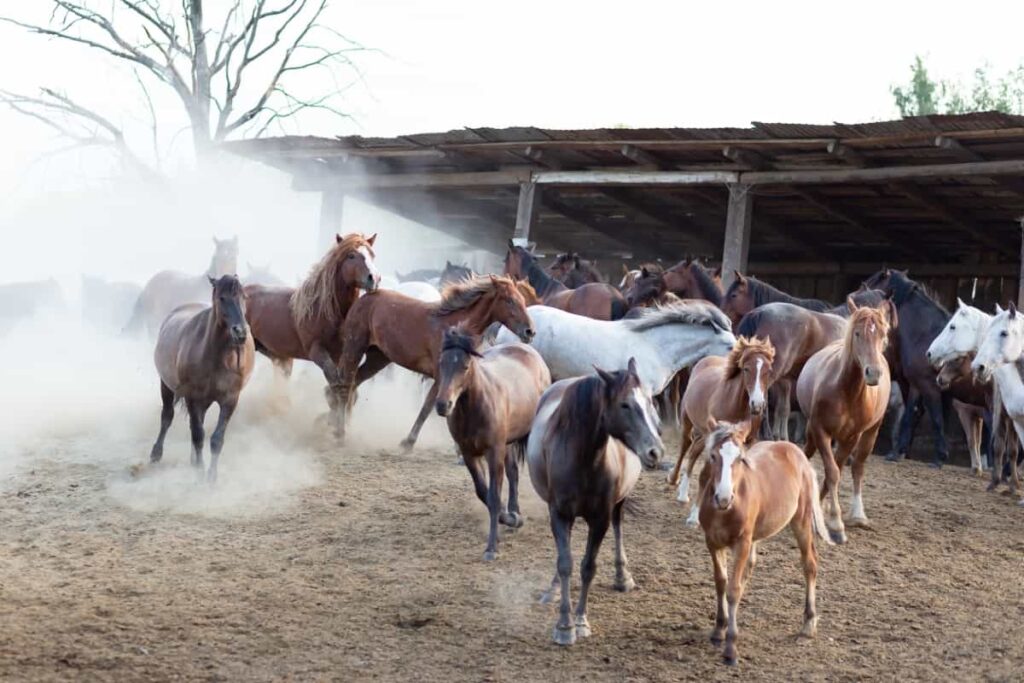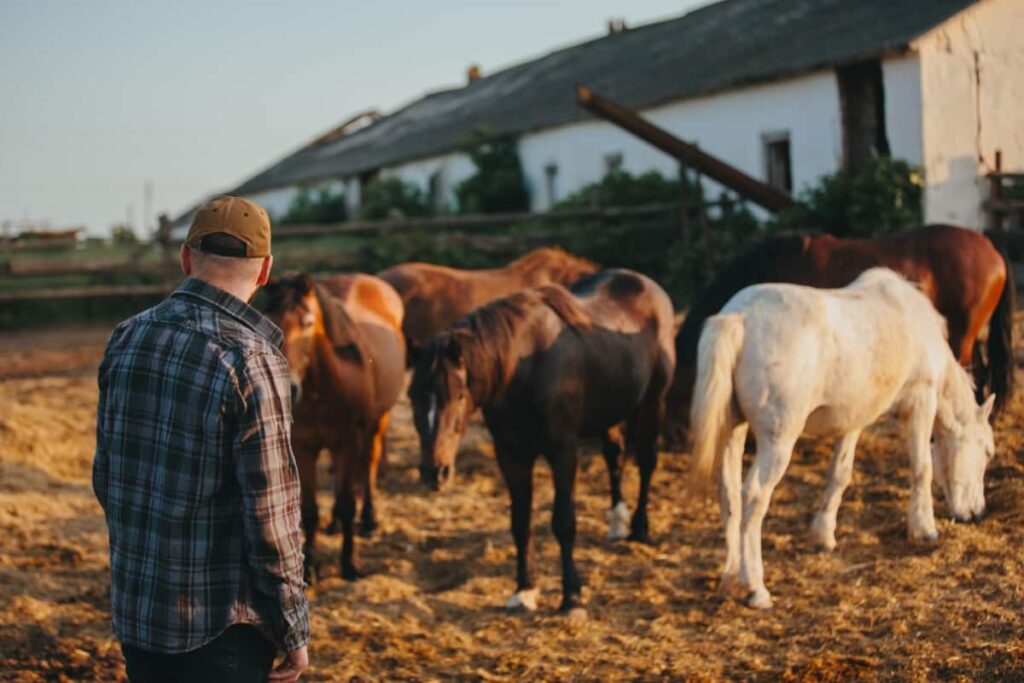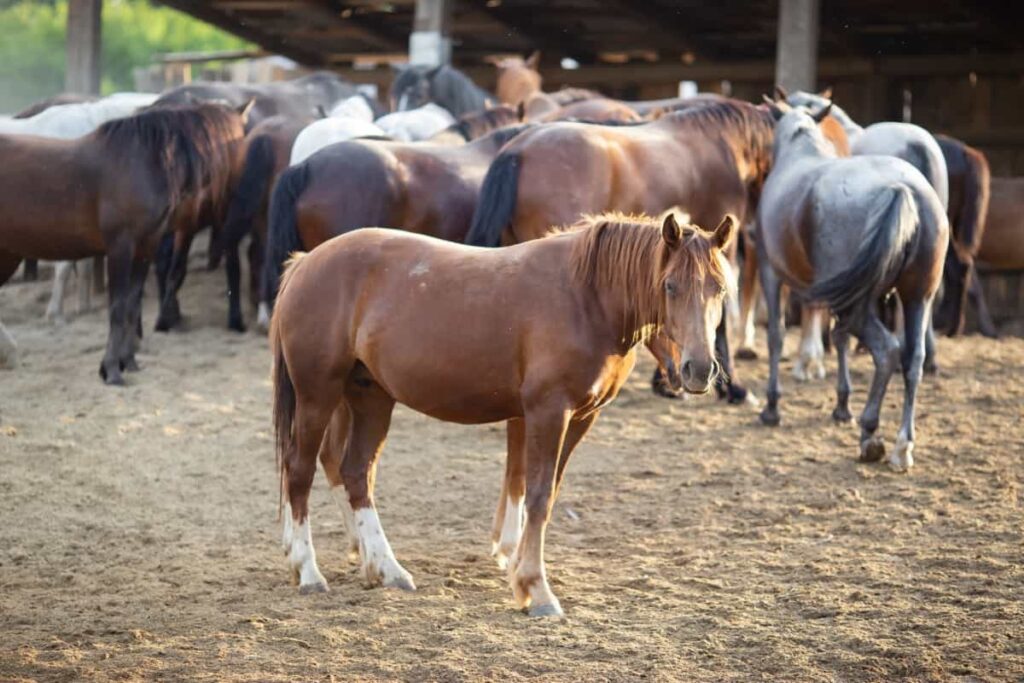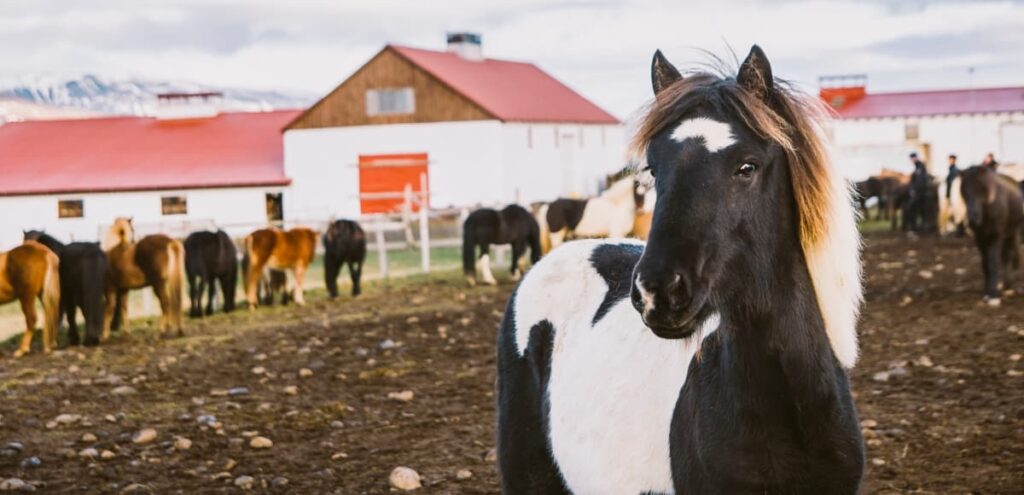Embarking on a horse farming venture requires meticulous planning to ensure a thriving and sustainable business. This horse farming business plan outlines a strategic 10-step approach to successfully raising horses, covering everything from acquiring the right breeds to implementing effective management practices.

Delve into the intricacies of establishing a horse farm, addressing essential considerations such as infrastructure, healthcare, and nutrition. This horse farming business plan equips aspiring horse farmers with the knowledge to cultivate a prosperous and fulfilling enterprise in the equine industry.
Horse Farming Business Plan
Step 1: Understanding the Basics of Horse Farming
Before delving into the complexities of horse farming, grasp the fundamentals. Begin by acquiring a comprehensive understanding of horse breeds, their characteristics, and their specific needs. Recognize the diverse purposes horses serve, whether for racing, riding, or work and tailor your venture accordingly. Familiarize yourself with the equine industry guide, behavior, and common health issues to ensure proper care and management.
Research zoning regulations and legal requirements governing horse farming in your region, securing necessary permits and permissions. Identify your target market within the equine industry, whether it be breeding, training, or boarding. Develop a keen sense of financial planning, estimating initial costs for land, facilities, and equipment, as well as ongoing expenses like feed, veterinary care, and maintenance.
Step 2: Choosing the Right Location For Horse Farm Setup
Selecting an optimal location is pivotal for the success of your horse farming venture. Evaluate potential sites based on factors like climate, soil quality, and accessibility. Ensure the chosen location aligns with your business goals and the well-being of the horses. Consider proximity to equestrian facilities, veterinarians, and feed suppliers. Adequate space is essential, allowing horses to graze and exercise freely.
Assess the land’s suitability for building stables, paddocks, and other necessary structures. Adequate drainage and water sources are vital for maintaining a healthy environment. Design your horse farm layout with efficiency in mind, optimizing workflow and ensuring ease of access for feeding, cleaning, and veterinary care. Prioritize safety measures, incorporating sturdy fencing and well-maintained paths. Implement eco-friendly practices where possible, balancing functionality with sustainability.
Step 3: Develop a Sustainable Business Model for Your Horse Farm
Crafting a sustainable horse farming model is imperative for the long-term success of your horse farming venture. Define your primary objectives, whether they involve breeding, training, boarding, or a combination. Conduct market research to know the demand for specific services within the equine industry and tailor your offerings accordingly. Establish price structures that reflect the value of your services while remaining competitive.
Factors in operational costs include land maintenance, feed, veterinary care, and labor. Diversify revenue streams by exploring additional services such as riding lessons, therapy programs, or hosting events. Consider implementing sustainable practices in your daily operations, like waste disposal, energy efficiency, and water conservation. Embrace technology for record-keeping, marketing, and communication to streamline processes and enhance efficiency.
Step 4: Selecting and Purchasing the Right Breed of Horses
Horse breed selection is a pivotal decision that directly influences the success of your horse farming business. Research various breeds and assess their suitability for your chosen focus, whether it’s for racing, riding, or specific work purposes. Consider factors such as temperament, size, and any special care requirements.
In case you missed it: 4 Reasons to Assess Your Horse’s Body Condition Scoring

Evaluate the local market demands and preferences to align your horse breed selection with potential customer interests. Seek guidance from experienced breeders and veterinarians to ensure a well-informed decision. When purchasing horses, prioritize reputable breeders and sellers with a track record of best practices and healthy stock. Conduct thorough health checks to identify any potential issues and the overall well-being of the animals.
Step 5: Essential Horse Care Management Practices
Implementing meticulous horse care management practices is fundamental to the well-being and performance of your equine assets. Develop a routine for feeding, ensuring a balanced and nutritious diet tailored to each horse’s needs. Establish a regular schedule for veterinary check-ups, vaccinations, and dental care.
Maintain clean and comfortable living conditions in stables and paddocks, prioritizing proper ventilation and pest control. Foster a consistent exercise regimen to promote physical health and mental well-being. Monitor social dynamics within the herd, addressing any conflicts promptly. Implement effective parasite control measures and have a well-defined emergency response plan in place. Regularly groom and inspect each horse for signs of injury or illness.
Step 6: Horse Training Techniques
Training horses requires patience, consistency, and a deep understanding of equine behavior. Start with basic groundwork, establishing trust through grooming, handling, and desensitization exercises. Utilize positive reinforcement, rewarding desired behaviors with treats or praise. Progress to halter training, teaching horses to lead and respond to cues. Gradually introduce saddle and bridle, acclimating them to the equipment.
Employ desensitization techniques to familiarize horses with various stimuli, such as sounds and objects. Implement systematic training sessions for specific skills like mounting, dismounting, and basic commands. Use a calm and assertive demeanor to establish leadership without instilling fear. Gradually introduce ridden exercises, focusing on responsiveness and obedience.
Step 7: Marketing Your Horse Farming Business
Develop a professional and visually appealing website showcasing your facilities, services, and success stories. Utilize social media to communicate with potential customers, sharing updates, images, and educational content about horse care. Network with local equestrian organizations, attend events and collaborate with other businesses in the community. Offer promotions, discounts, or referral incentives to attract initial clients and build a loyal customer base.
Leverage advertising to reach a broader audience and consider traditional marketing methods such as flyers or local publications. Maintain a consistent brand image and reputation for quality care and services. Encourage satisfied clients to provide testimonials, enhancing your credibility. Well-executed horse farm marketing strategies will help your horse farming business thrive in a competitive market.
Step 8: Understanding and Complying with Legal Requirements: Equine Business Legal Requirements
Study local, state, and federal regulations pertaining to animal welfare, zoning, and environmental standards. Obtain the necessary permits and licenses in compliance with agricultural and business laws. Implement a robust record-keeping system for health records, transactions, and other essential documentation. Adhere to employment laws when hiring and managing staff, prioritizing safety protocols and workers’ rights. Consider liability insurance to protect against unforeseen events. Regularly update your knowledge of evolving regulations and seek legal counsel when necessary.
Step 9: Expanding Your Horse Farm
Diversify your offerings by exploring new services or markets. This could involve introducing specialized training programs, expanding your breeding program, or venturing into related equestrian activities. Collaborate with professionals in the industry and explore partnerships that can enhance your farm’s reputation and reach.
In case you missed it: Automation in Livestock Management with AI: Enhancing Sustainability with Technology

Invest in marketing efforts to promote the expansion, emphasizing any new services, facilities, or accomplishments. Continuously monitor financial performance, ensuring that expansion aligns with profitability goals. By thoughtfully expanding your horse farm, you can meet the evolving needs of your clientele and capitalize on emerging opportunities within the equine industry.
Step 10: How to Raise Horses
Raising horses successfully requires a holistic approach encompassing diligent care, effective management, and continuous learning. Prioritize the well-being of your horses through a balanced diet, routine veterinary care, and appropriate exercise. Foster a positive and stimulating environment for mental and physical health.
Maintain clean and safe facilities, ensuring proper ventilation and pest control. Regularly assess the herd’s dynamics and individual horse behaviors. Monitor for signs of illness or stress and respond promptly. Continue education on equine nutrition, training techniques, and industry trends.
Cost to Setup Horse Farm
The cost to set up a horse farm varies widely based on location, infrastructure, and scale. Expenses include land acquisition, facilities (stables, arenas), horse purchases, veterinary care, and legal compliance. Choosing the right location breed and implementing effective management, training, and marketing strategies are crucial for a successful horse farming business. Overall, starting a horse farm may require an investment ranging from $500,000 to $2 million.
In case you missed it: Cassava as Livestock and Poultry Feed: Exploring Benefits with Different Animals

Conclusion
By understanding the basics, selecting the right location, and implementing sustainable practices, you lay the groundwork for success. Careful breed selection, effective training techniques, and compliance with legal requirements are paramount. Marketing strategies, continuous learning, and thoughtful expansion ensure a thriving horse farming business, balancing the well-being of the animals with financial sustainability.
- Profitable Village Farming Business Ideas in 2024
- High-Yield Aquaculture: Fast-Growing Fish for Farming
- Effective Fish Pond Construction Techniques for Beginners
- Irrigation and Water Management in Pineapple Farming
- Blossom to Harvest: Mastering Flowering and Pollination in Papaya Farming
- Pig Fattening Essentials: From Selection to Sale for Beginners
- Raising Wagyu Cattle: A Complete Guide for Premium Beef Production
- Soil Types and Their Water Holding Capacity
- Optimizing Irrigation Schedules for Coconut Groves for Enhanced Yield
